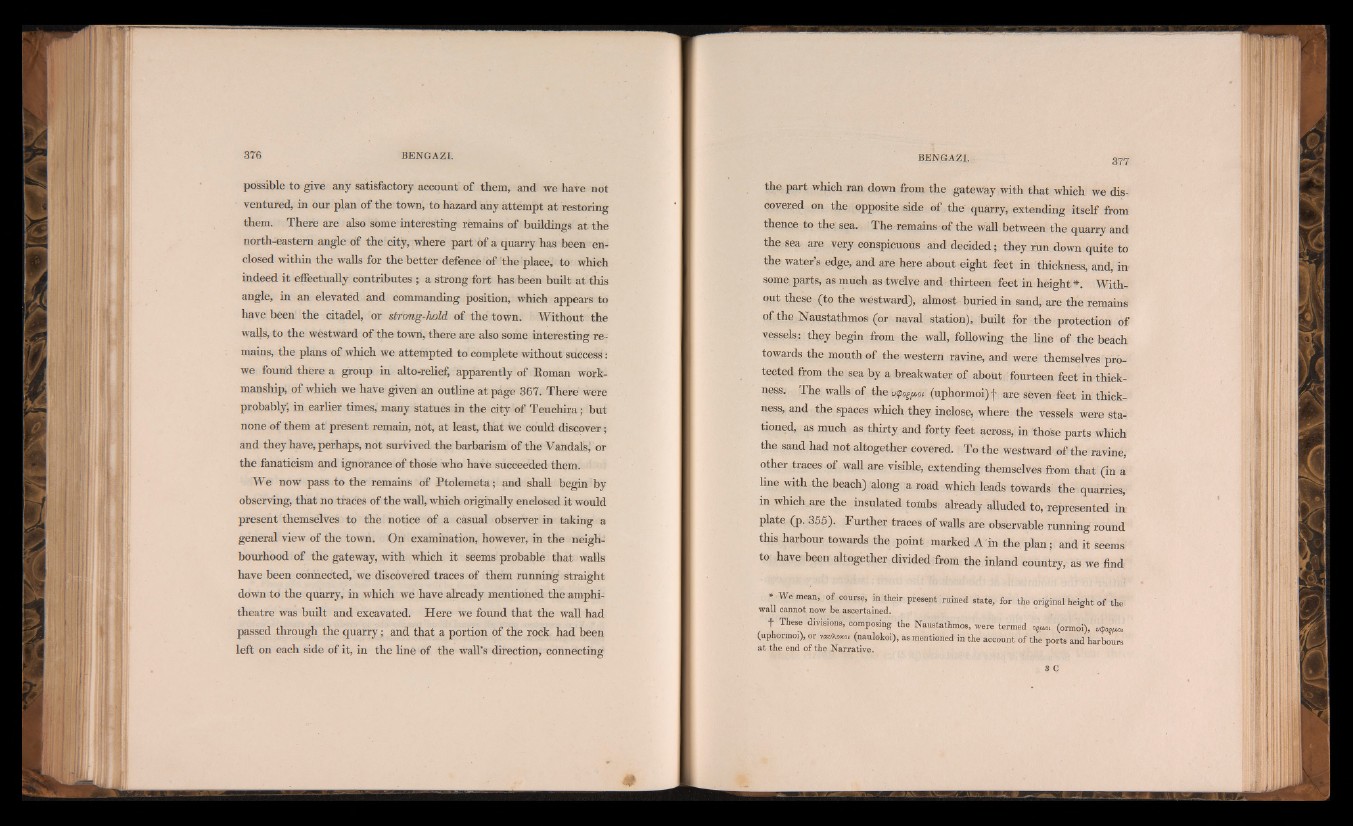
possible to give any satisfactory account of them, and we have not
ventured, in our plan of the town, to hazard any attempt at restoring
them. There are also some interesting remains of buildings at the
north-eastern angle of the city, where part of a quarry has been enclosed
within the walls for the better defence of the place, to which
indeed it effectually contributes ; a strong fort has been built at this
angle, in an elevated and commanding position, which appears to
have been the citadel, or strong-hold. of the town. Without the
walls, to the westward of the town, there are also some interesting remains,
the plans of which we attempted to complete without success:
we found there a group in alto-relief, apparently of Eoman workmanship,
of which we have given an outline at page 367. There were
probably; in earlier times, many statues in the city of Teuehira; but
none of them at present remain, not, at least, that we could discover;
and they have, perhaps, not survived the barbarism of the Vandals; or
the fanaticism and ignorance of those who have succeeded them.
We now pass to the remains of Ptolemeta; and shall begin by
observing, that no traces of the wall, which originally enclosed it would
present themselves to the notice of a casual observer in taking a
general view of the town. On examination, however, in the neighbourhood
of the gateway, with which it seems probable that walls
have been connected, we discovered traces of them running straight
down to the quarry, in which we have already mentioned the amphitheatre
was built and excavated. Here we found that the wall had
passed through the quarry; and that a portion of the rock had been
left on each side of it, in the line of the wall’s direction, connecting
the part which ran down from the gateway with that which we discovered
on the opposite side of the quarry, extending itself from
thence to the sea. The remains of the wall between the quarry and
the sea are very conspicuous and decided; they run down quite to
the water’s edge, and are here about eight feet in thickness, and, in
some parts, as much as twelve and thirteen feet in height*. VYi tli-
out these (to the westward), almost buried in sand, are the remains
of the Naustathmos (or naval station), built for the protection of
vessels: they begin from the wall, following the line of the beach
towards the mouth of the western ravine, and were themselves protected
from the sea by a breakwater of about fourteen feet in thickness.
The walls of the (uphormoi)f are seven feet in thickness,
and the spaces which they inclose, where the vessels were stationed,
as much as thirty and forty feet across, in those parts which
the sand had not altogether covered. To the westward of the ravine,
other traces of wall are visible, extending themselves from that (in a
line with the beach) along a road which leads towards the quarries,
in which are the insulated tombs already alluded to, represented in
plate (p. 355). Further traces of walls are observable running round
this harbour towards the point marked A in the plan; and it seems
to have been altogether divided from the inland country, as we find
* We mean, of course, in their present ruined state, for the original height of the
wall cannot now be. ascertained.
+ These divisions, composing the Naustathmos, were termed oe(M1 (ormoi), «poyu.
(uphormoi), or .«eXoao, (naulokoi), as mentioned in the account o f the ports and harbours
a t the end of the Narrative.